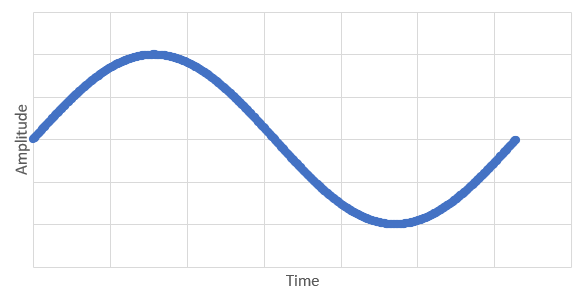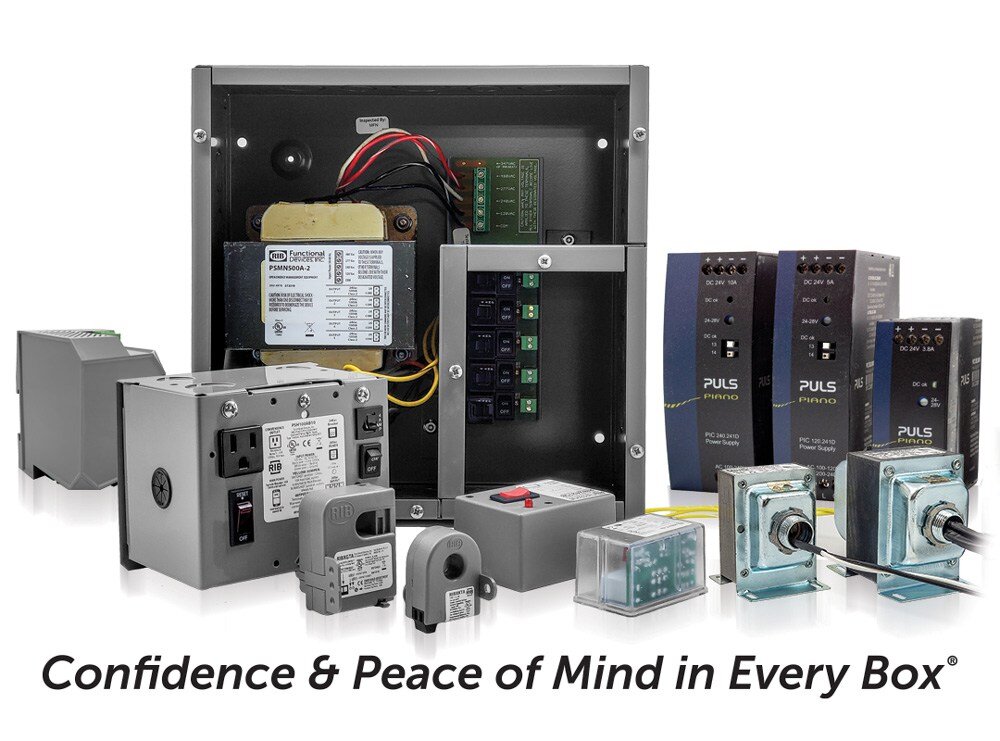
As building automation evolves, the equipment behind it must keep pace. Variable-Frequency Drives (VFDs), renewable energy systems, and non-standard loads are more common than ever; yet, traditional current sensors aren’t always up to the task. This blog explains why VFDs create unique measurement challenges, how the RIBXGT420-RMS solves them, and why it’s the right choice for accurate current sensing in today’s systems.
Functional Devices has produced current sensors for decades, reliably covering the standard 50 or 60 Hz range. But today’s systems, especially those using VFDs, often operate outside those frequencies. That’s why we developed the RIBXGT420-RMS, a true RMS (root mean square) current transducer built to measure complex, non-60 Hz signals with accuracy and ease.
Whether you’re managing a large building automation system or integrating VFDs into your existing setup, the RIBXGT420-RMS helps you get precise, reliable readings every time. To learn more or discuss your project needs, contact Functional Devices today. Our technical support team is ready to help.
Understanding Standard Line Frequencies
The hertz (Hz) is the unit of frequency in the International System of Units (SI) equivalent to one event (or cycle) per second. Most of the world’s AC power is either 50 Hz or 60 Hz. In the U.S., 60 Hz is the norm for residential, commercial, and industrial buildings.
The sine wave below takes 1/60th of a second to oscillate, and the amplitude would be dependent on the AC voltage of the building. This predictable oscillation allows traditional current sensors to provide stable, reliable readings. As long as your load runs on a clean, standard sine wave, a sensor like the RIBXGTA or RIBXKTF will do the job.

But not all equipment runs on fixed line frequencies. Motors and systems controlled by VFDs intentionally change their frequency to adjust speed and torque. This makes older current sensors struggle to produce accurate readings.
What VFDs Do and Why They Matter
An AC motor's revolutions per minute (RPM) is entirely dependent on the number of poles in the motor and the line frequency. Remember this equation: RPM = 120 × frequency ÷ number of poles.
A four-pole motor plugged into 60 Hz runs at about 1,800 RPM. But many applications don’t need full speed all the time. VFDs solve this by adjusting the frequency, which in turn controls motor speed and improves energy efficiency.
Let's go back to the equation. Changing the number of poles on the fly seems difficult. Changing the frequency? Easily done. with a VFD! Generally speaking, a VFD exploits the inductive aspects of an AC motor to send a current waveform similar to the sine wave above. Except, the frequency will be different. Going back to the formula that means we now have a controllable RPM.
By changing frequency, a VFD creates a non-standard output waveform. This “dirty” power can include harmonics, pulses, or distorted sine waves. Standard current sensors designed only for 50/60 Hz may give inaccurate results or fail entirely under these conditions.
Meet the RIBXGT420-RMS
The RIBXGT420-RMS is a current transducer capable of measuring any type of AC current you can throw at it (as long as you don't exceed the datasheet specifications). VFD? No problem. Square wave? Yes. A really poorly made UPS that outputs the minimum legal definition of a sine wave? The RIBXGT420-RMS can handle it.
The "RMS" stands for "root mean square" which means it characterizes the whole wave and does some math to output an average current. When your VFD is pulsing at 200 Hz, have no fear that the RIBXGT420-RMS will understand it.
Key specs and highlights include:
- Works with non-sinusoidal waveforms, including VFD outputs
- Provides a reliable 4–20 mA signal compatible with most BAS controllers
- Handles a wide sensing range
- Maintains accuracy at higher frequencies and distorted signals
Benefits of Using RIBXGT420-RMS with VFDs
If you’re using VFDs, the RIBXGT420-RMS offers several key benefits that can improve performance and simplify monitoring, including:
- Accurate Readings at Any Frequency. Get dependable measurements across a variety of waveforms.
- Energy Tracking & Maintenance. Verify equipment performance and catch irregularities early.
- Integration with BAS. Easily tie into your existing building automation systems with standard signals.
- Reduced Downtime. Proper monitoring helps prevent overloads and extend equipment life.
By leveraging these benefits, the RIBXGT420-RMS helps ensure your VFDs run efficiently, stay protected, and integrate seamlessly with your building automation system.
Installation Tips for Success
Installing the RIBXGT420-RMS is straightforward:
- Mount the device on a DIN rail or panel per the datasheet.
- Pass the conductor through the sensing window.
- Wire the 4–20 mA output to your BAS controller.
- Follow recommended practices for VFD environments—like keeping sensor wiring away from high-voltage cables—to reduce noise.
Always comply with local and national codes for electrical work. This ensures safety and consistent performance.
Functional Devices: Your Partner in Reliable Automation Hardware
VFDs are revolutionizing how facilities control motors and save energy, but they also create complex, non-standard waveforms that challenge traditional current sensors. The RIBXGT420-RMS is designed specifically to measure these waveforms accurately, giving you the data you need to keep your systems running smoothly.
If you’re looking for a sensor that can keep up with your VFDs or other non-standard loads, contact Functional Devices today. Our technical support team can help you select the right sensor and ensure your building automation system is prepared for whatever frequencies come its way.
About Functional Devices, Inc.

Functional Devices, Inc., located in the United States of America, has been designing and manufacturing quality electronic devices since 1969. Our mission is to enhance lives in buildings and beyond. We do so by designing and manufacturing reliable, high-quality products for the building automation industry. Our suite of product offerings include RIB relays, current sensors, power controls, power supplies, transformers, lighting controls, and more.
We test 100% of our products, which leads to less than 1 out of every 16,000 products experiencing a failure in the field.
Simply put, we provide users of our various products confidence and peace of mind in every box.

